What’s November like in your yard? Correct proper right here all through the northeast, it’s a less-than-joyous trifecta of grey skies, leaf-less timber, and bone-chilling precipitation that’s someplace between snow and rain. We might have had a number of gentle frosts in October, nonetheless November will definitely ship the harsher temps. This implies it’s time to begin out out planting out these hardy bulbs and bringing all through the tender ones.
What bulbs it is advisable to dig up and retailer in November will largely rely in your rising zone, native native local weather, and the form of plant. Gardeners in zones 7 and eight are appropriate on the cusp of hardiness for plenty of of our favourite tropical and tender vegetation. Relying on how well-drained the soil is or how dry the winters are, some gardeners may be succesful to tuck their bulbs in with an additional thick layer of mulch.
Completely completely different gardeners? Not so fortunate. In case you may be gardening in a neighborhood local weather that selections extended and chilly winters, dig in (actually) and get these tender bulbs out of the yard this month.
Anemone


These cheery little flowers are maybe mainly basically essentially the most cold-tolerant on this report, though they won’t survive months of subzero temperatures. Anemone have pretty white, pink, purple, and blue petals surrounding darker facilities. To not be confused with the perennial wooden anemone or fall-blooming Japanese anemone, these vegetation are often grown as cool-season cut back flowers or bedding vegetation.
Anemones are hardy in zones 7 and eight if coated with mulch all through the autumn, and may be left uncovered year-round in zones 9 and hotter. Gardeners in colder zones may have to retailer these corms indoors for the winter. Wait till the foliage has withered and turned yellow, then dig the anemone up. Let the corms dry for 2-3 days, then gently take away the lifeless foliage. Retailer corms in a darkish, dry location saved at room temperature.
Caladium


Caladiums are prized for his or her pretty, heart-shaped leaves that unfurl in shades of white, pink, purple, and inexperienced. These fabulous foliage vegetation are native to the tropical forests of Central and South America. As such, they require scorching, humid circumstances and are largely grown as a summer season season annual in North America.
Additional tender than dahlias, caladium tubers should be dug and lifted earlier than frost has hit your home. Take away the soil from the tubers and permit them to remedy for one week in a heat location out of direct photograph voltaic. Retailer caladium tubers in a barely hotter location than your fully completely different tender bulbs – a gentle 55-60°F (13-16°C) is finest.
Calla Lily
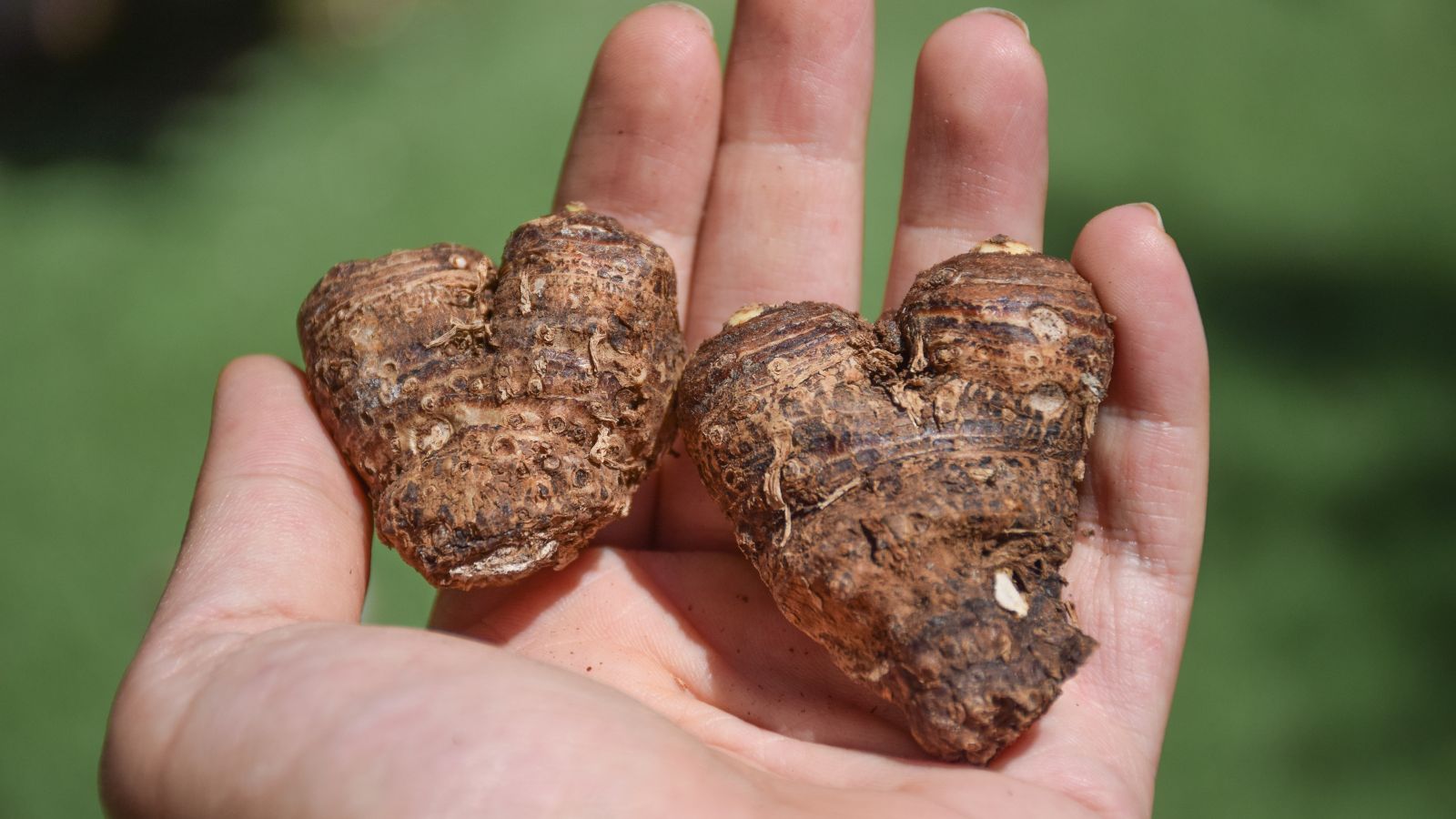

The funnel-shaped, upright flowers of the calla lily makes them terribly well-liked with cut back flower followers. Blooms are typically white, though horticulturists have bred various pink, yellow, orange, and purple cultivars. Calla lilies have extended, arrow-shaped leaves which is probably every regular inexperienced or evenly speckled with white. These vegetation are native to southern Africa, the place they’re present in coastal marshes, moist meadows, and fully completely different heat, barely moist areas.
Calla lilies make excellent container vegetation and may be grown indoors. They should not be going to survive open air in areas with freezing chilly winters. Gardeners in zones 7 and colder should plan to carry calla lily rhizomes shortly after the primary frost. Lower off the wilted stems 1-2 inches above the soil line, then dig up the rhizomes. Dry the rhizomes for 2-3 weeks in a heat location out of direct daylight, and retailer them at 45-55°F (7-13°C).
Canna


Cannas or canna lilies are acknowledged for his or her lush, orchid-like flowers that emerge in good purple, pink, coral, orange, and yellow. Giant inexperienced, bronze, burgundy, or bicolor leaves guarantee this plant seems to be eye-catching, even when not in bloom. There are dozens of canna lily species scattered spherical tropical areas of Asia, Africa, and South America.
In contrast with a few of the fully completely different tender bulbs talked about on this textual content, cannas are ever-so-slightly extra tolerant of chilly circumstances. Nonetheless, they nonetheless can’t survive months of below-freezing temperatures. These vegetation will preserve hurt if left all through the flooring beneath 25°F (-4°C).
Canna lilies will survive year-round in our warmest rising zones, though gardeners in zone 6 may need in order so as to add a healthful layer of mulch or present fully completely different safety for these tropical vegetation. Gardeners in zones 5 and colder ought to dig up canna rhizomes appropriate after the primary frost has zapped the foliage nonetheless earlier than there was a difficult freeze. Mud the unfastened soil off of the rhizomes, after which set them apart in a dry location for about one week. As shortly as cured, canna rhizomes may be saved in a cool, darkish location till spring.
Colocasia
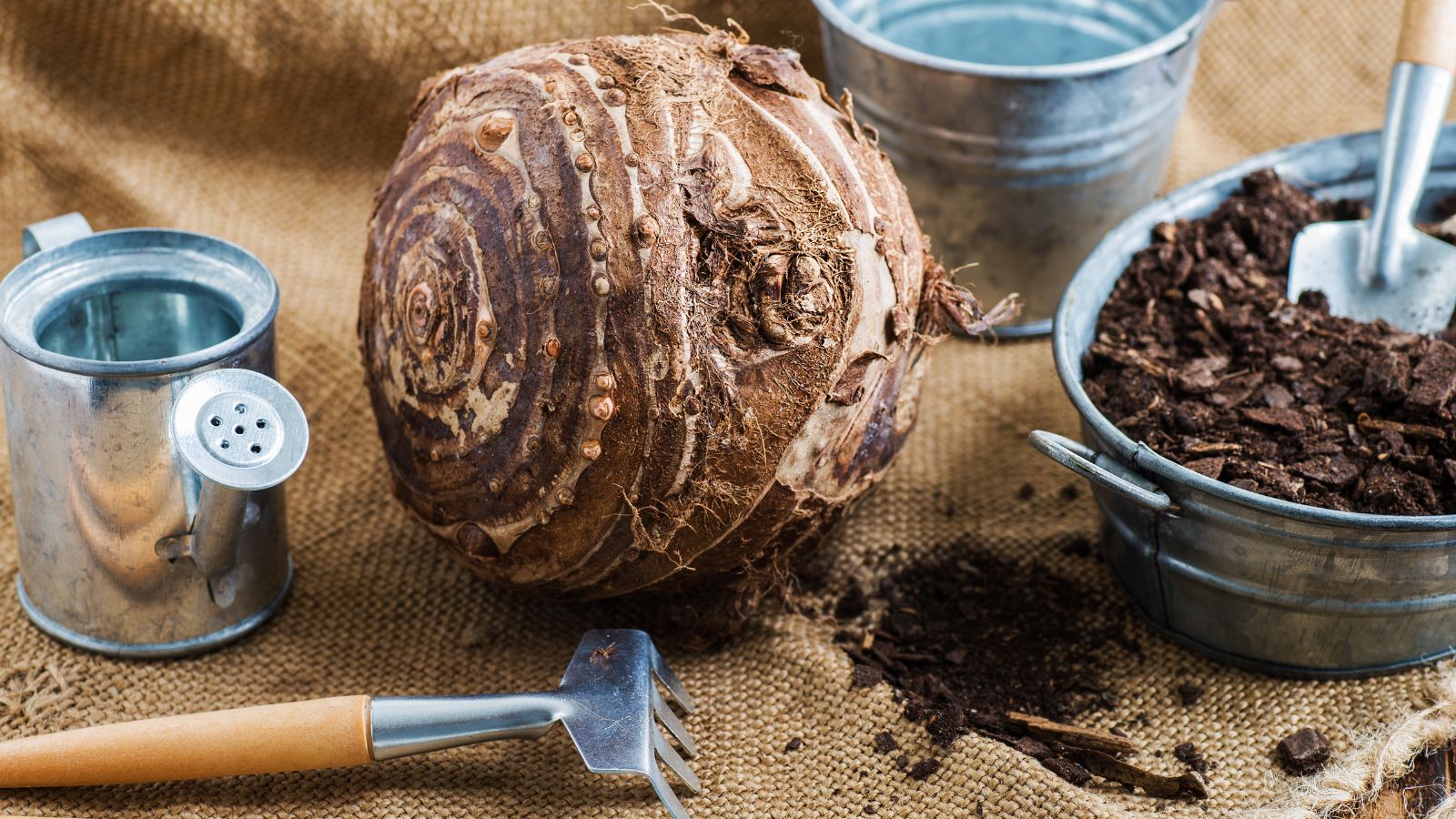

Together with alocasia, colocasia are extra generally generally known as elephant ears. Acknowledged for his or her really big, shield-shaped leaves, colocasia are the epitome of lush, tropical yard vibes. Their daring, vibrant foliage works fantastically in containers, mass plantings, and borders. Colocasia are native to southern Asia, Indonesia, and Malaysia.
Most colocasia are solely winter hardy to zone 8. A healthful layer of mulch all through the tubers will assist defend the roots all by the use of the chillier months. Nonetheless, these are tropical vegetation that like scorching, humid circumstances – gardeners colder than zone 8 may have to dig up the bulbs and produce them inside after the primary exhausting frost. Shake the surplus soil off the bulbs and retailer them in a cool, darkish location till they’re usually potted up indoors in mid-spring.
Dahlia
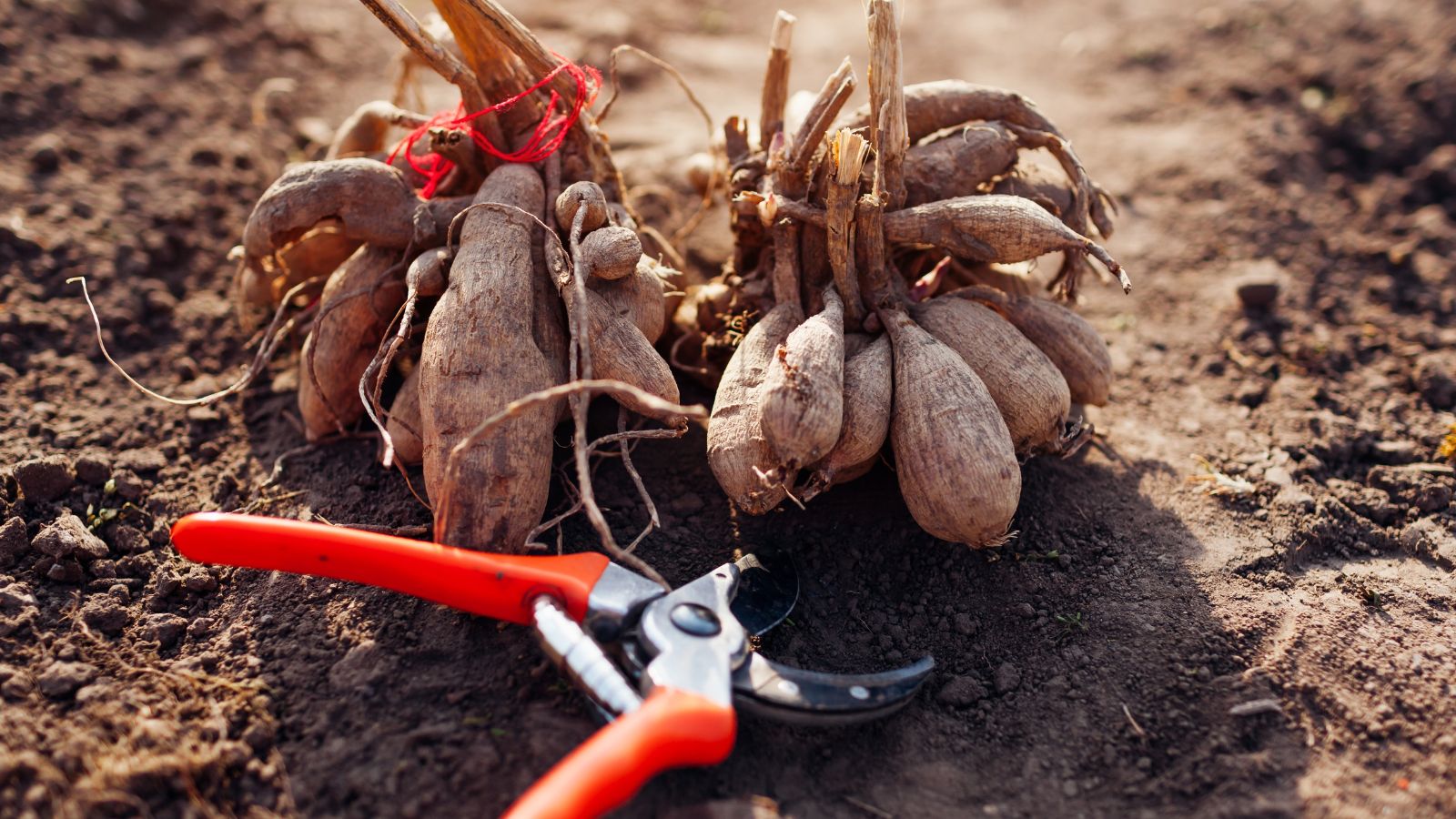

Dahlias are a few of basically essentially the most spectacular tender tubers a gardener can develop, and their recognition as a cut back flower has exploded presently. There are an entire bunch of kinds to select from, with a seemingly limitless mixture of flower kind, shade, and dimension. These vegetation are native to Mexico and areas of Central America, and attributable to this actuality, should not be going to survive a extended, freezing winter.
Gardeners in zones 7 and colder should dig up dahlia tubers after the primary exhausting frost has killed the foliage. Retailer dahlia tubers in a cool, darkish location, ideally between 40 and 50°F (4-10°C). A storage, shed, or basement is often absolute best. Storing your dahlia tubers requires inserting a stability in moisture. Some humidity is required to handle the tubers hydrated, nonetheless an excessive amount of can set off mildew and decay.
Gardeners in zones 9 and hotter can go away their dahlia tubers all through the flooring year-round. Zone 8 gardeners? They need to ponder their native native local weather and soil circumstances. As soon as you have obtained moist winter native climate and solely pretty drained soil, dig up the dahlias – the hazard of rot is just too excessive.
Freesia
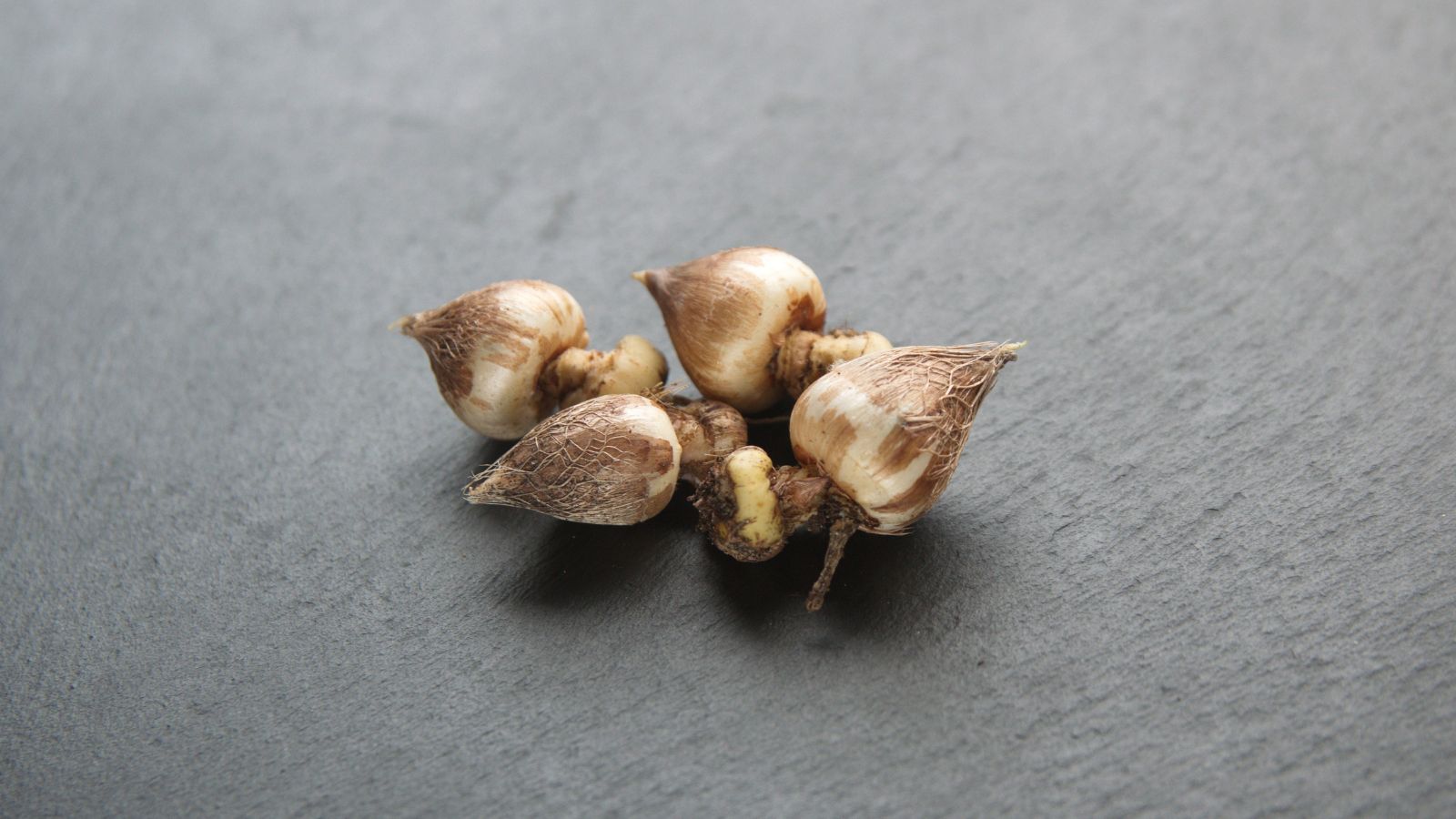

An elegant flower acknowledged for its intoxicating perfume, freesia is one completely different tender bulb that’s well-liked with cut back flower lovers. Freesia are native to jap and southern Africa, the place they really go dormant in the midst of the most well-liked months. These multicolored beauties flower finest in gentle climates the place temperatures protect beneath 70°F (21°C).
Whereas freesia prefers cool, temperate native climate to bloom, it isn’t going to survive an extended winter of below-freezing temperatures. Gardeners in zone 8 and colder may have to dig up and retailer the corms.
Dig up freesia corms after the foliage has begun to yellow and fade, nonetheless earlier than the primary exhausting frost. Clear off any residual soil from the corms, then change them to a heat, barely humid atmosphere for 2-3 months. This might mimic the dormant interval of their native atmosphere. Afterwards, retailer freesia corms in a cool location till you may be succesful to plant as quickly as additional.
Gladiolus


Gladiolus, fondly usually generally known as “glads” to many gardeners, are prized for his or her spectacular spear-like stems and leaves. Native to components of Africa and Madagascar, these inserting vegetation are loaded with tall flower spikes in shades of pink, purple, purple, orange, and yellow.
There are roughly 180 totally fully completely different species of glads. Most are chilly hardy all the way in which wherein all the way in which right down to zone 7, nonetheless there are some hybrids which is probably hardy all the way in which wherein all the way in which right down to zone 5 when mulched totally.
Dig gladiolus corms up every after the foliage has yellowed and pale, or wait till merely after the first gentle frost. Healthful gladiolus should be left standing all through the soil for so long as potential, to present the corms ample time to develop and retailer vitality for subsequent season’s blooms. Lay the corms out in a light-weight, ethereal location to remedy for 2 weeks. Retailer corms in a cool location with a substantial amount of good air circulation.
Oxalis
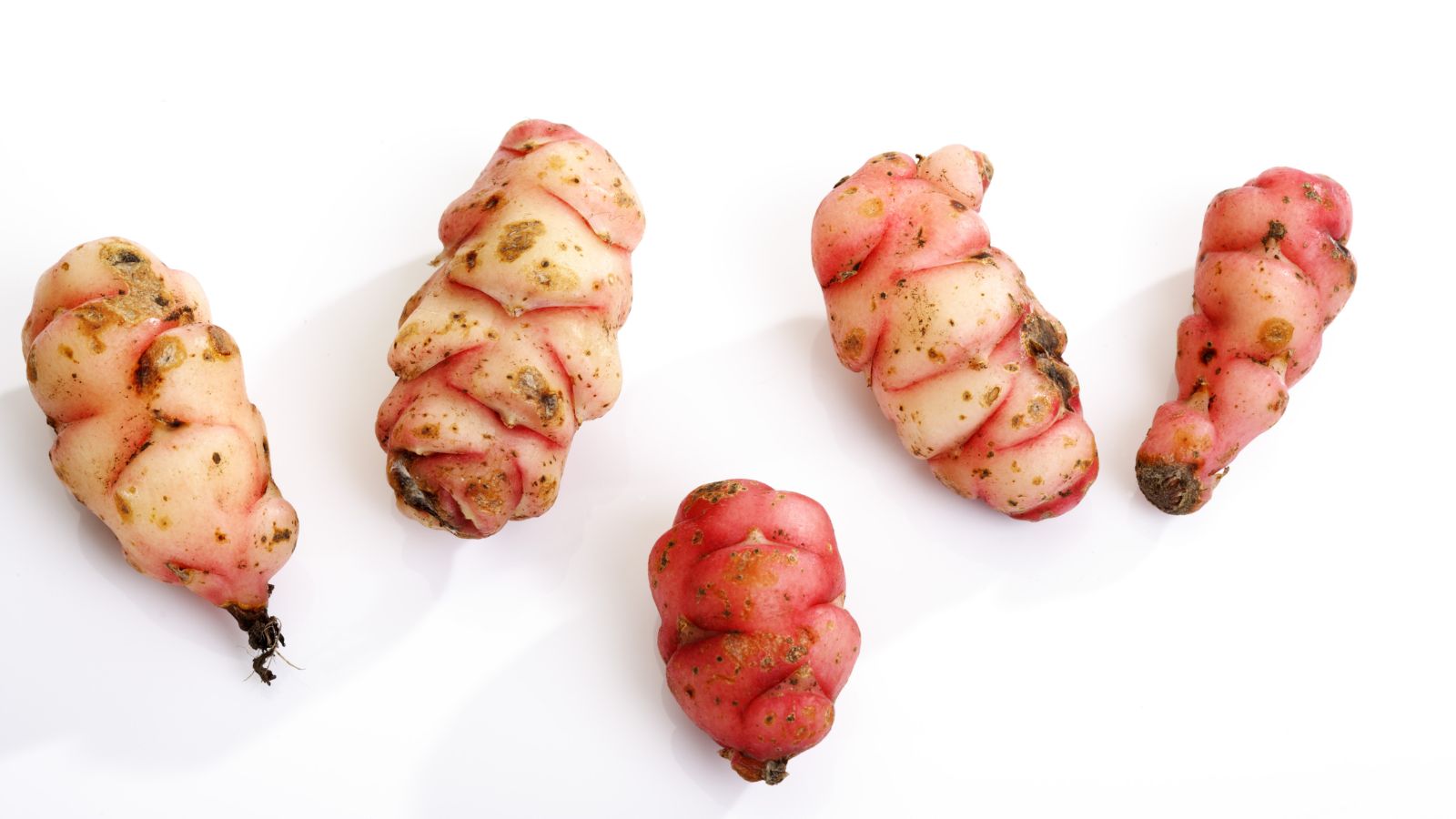

Moreover generally known as purple shamrock, false shamrock, or purple wooden sorrel, Oxalis triangularis is beloved for its vibrant, darkish purple leaves. This plant merely is just not an precise shamrock, nonetheless pretty a form of wooden sorrel native to South America. It’s incessantly grown as an indoor houseplant, nonetheless, it’s typically utilized in dry, shady yard beds and borders.
Oxalis is not cold-hardy and will solely be left open air all through the warmest rising zones. Contained in the early fall, gardeners can dig up complete vegetation, place them in a container, and change them indoors.
If bulbs are going to be saved for the winter, wait till a difficult frost kills the higher foliage in mid to late fall. Dig the bulbs up and produce them indoors. Retailer oxalis bulbs in paper baggage full of peat moss or wooden shavings, and place the luggage in a cool, darkish location that is nonetheless 40-50°F (4-10°C).
Ranunculus
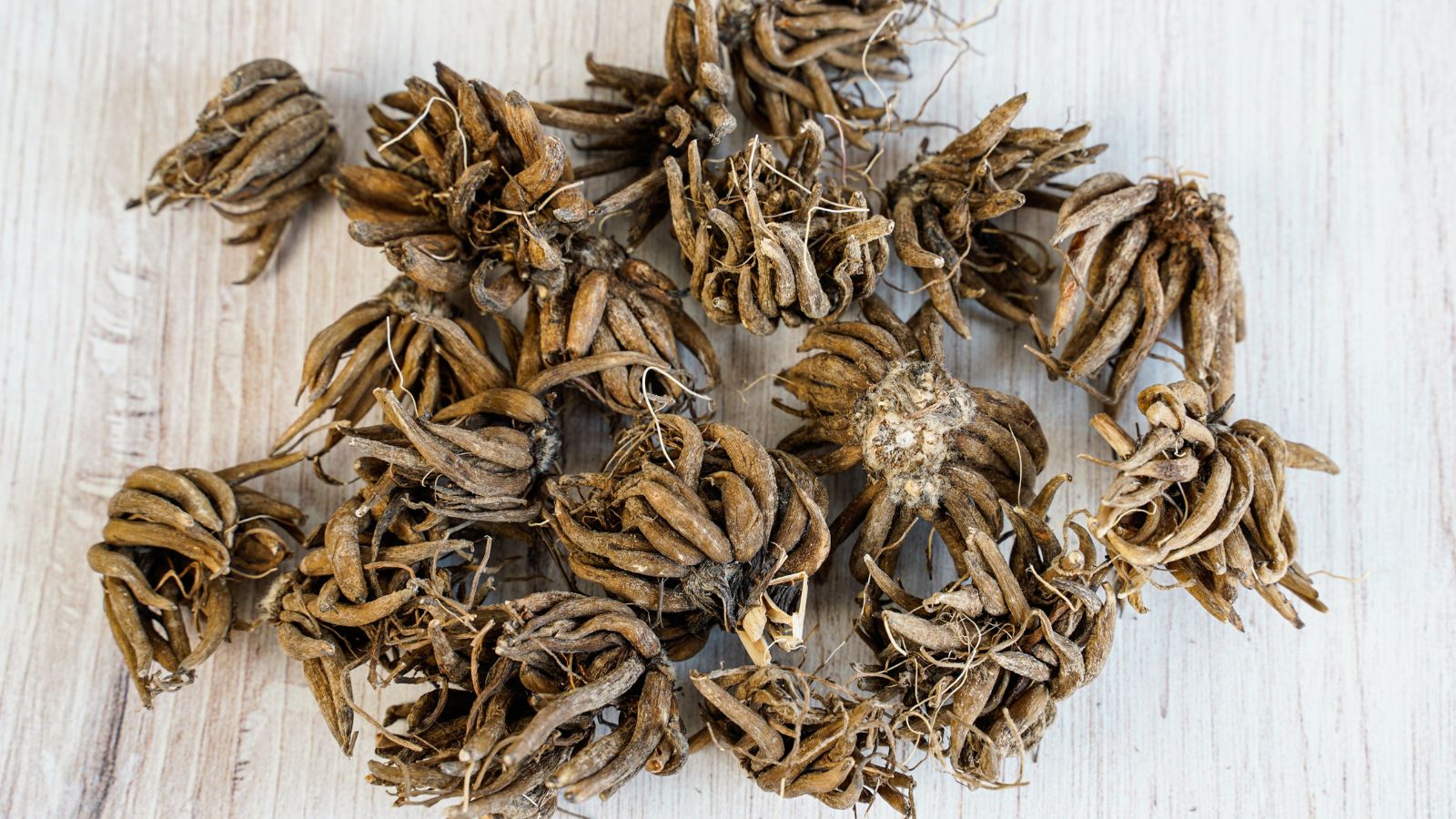

With their layers of delicate petals in candy-like hues of pink, coral, peach, orange, and yellow, ranunculus resemble little roses. These cool-season flowers are a bit choosy with reference to temperature. They carry out poorly if it’s hotter than 70°F (21°C) for extended. On the same time, they aren’t cold-hardy they often won’t survive prolonged intervals beneath freezing. Ranunculus are actually solely winter-hardy in zones 8 and hotter.
Gardeners in zones 3-7 should dig ranunculus corms as shortly as the warmth of the summer season season has handed and fall has set in. The foliage will begin to yellow and skinny out. Retailer corms in a cool, dry, darkish location that is nonetheless 50-55°F (10-13°C).
Tuberous Begonia
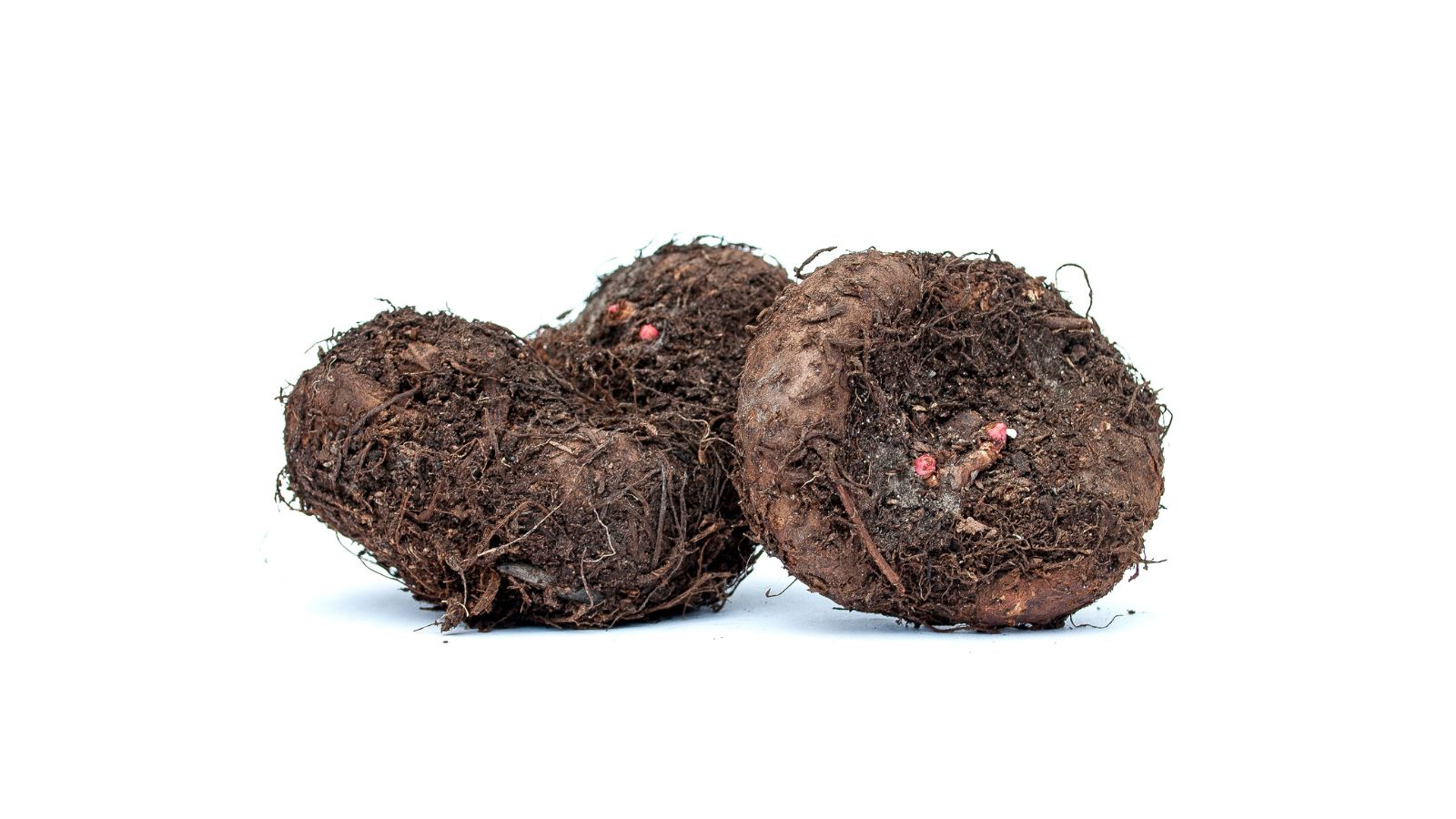

Shade-loving, vibrant tuberous begonias are unimaginable additions to out of doors planters, hanging baskets, and yard borders. As natives to the tropics of South America and components of Africa, tuberous begonias don’t survive chilly, freezing temperatures. Gardeners all through absolutely the warmest climates can go away the tubers all through the flooring, nonetheless gardeners in zone 9 and colder should dig up and retailer the tubers.
Tuberous begonias naturally enter a dormant interval in late fall. They’ll cease flowering and producing leaves and slowly begin to ship vitality to the tubers and roots.
Dig begonia tubers when the foliage begins to yellow, or after the primary gentle frost. Set the begonia tubers in a cool, dry place for 2 weeks for curing. As shortly as a result of the tubers have had an opportunity to dry out a bit, retailer them significantly specific individual paper baggage, which ensures a substantial amount of airflow, at 40-50°F (4-10°C).
Key Takeaways
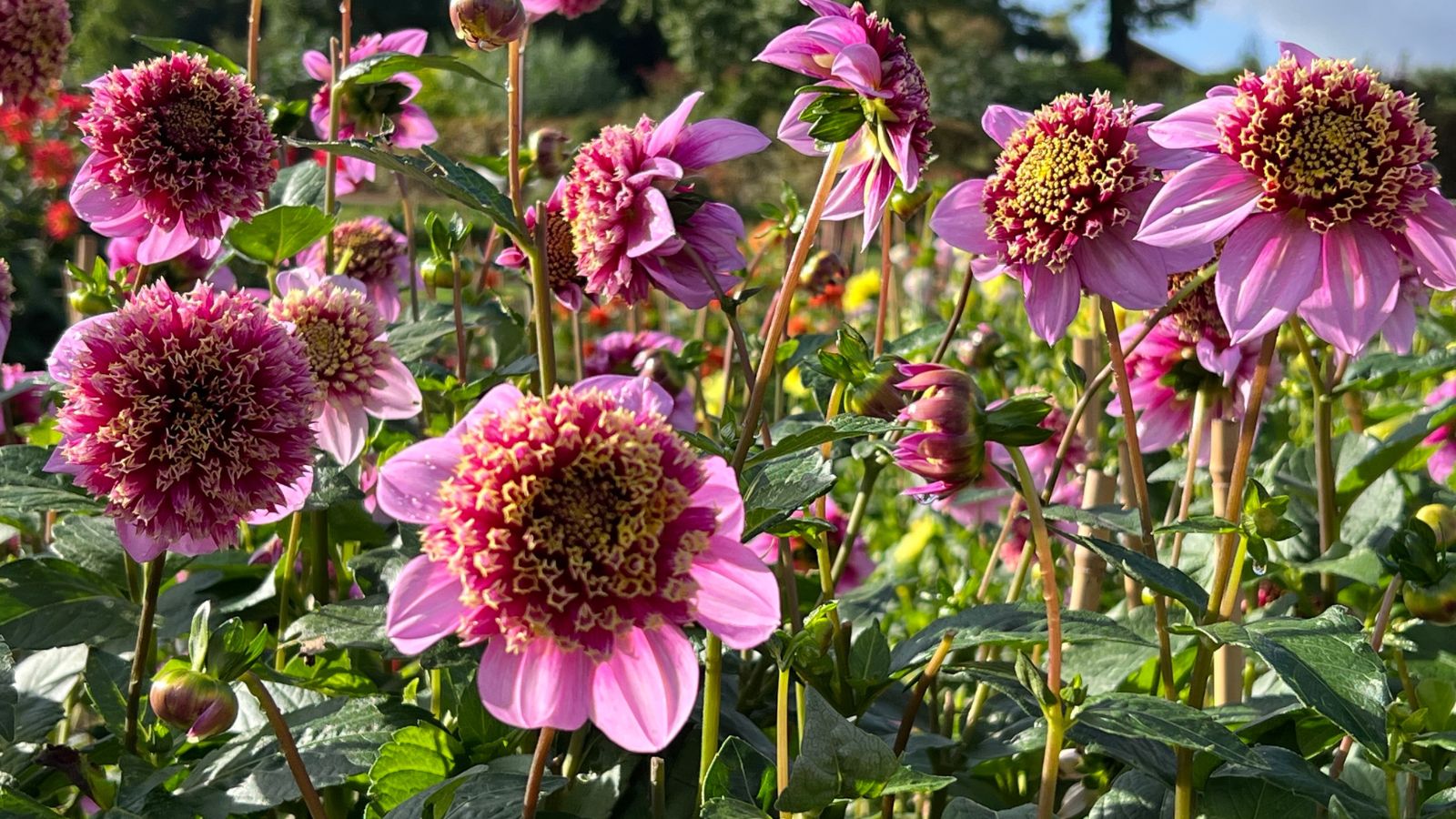

Fall is a time for plenty of vegetation, animals—and constructive, even gardeners—to point inward, go dormant, and start a interval of leisure. Which may be very true for our tropical tubers, most of which could’t survive prolonged intervals of below-freezing temperatures. By taking the time to dig up and herald your tender bulbs this November, you’ll be setting your self up for a considerable quantity of gorgeous blooms subsequent spring.
